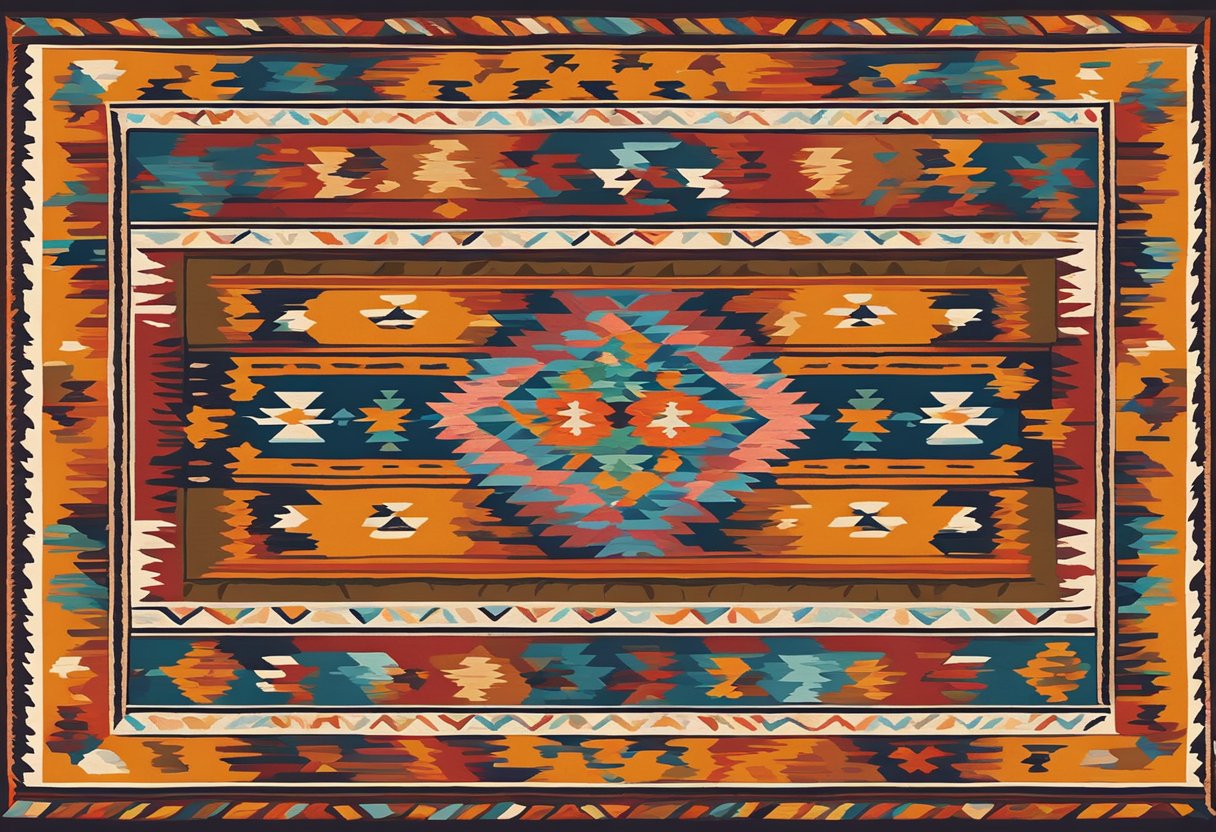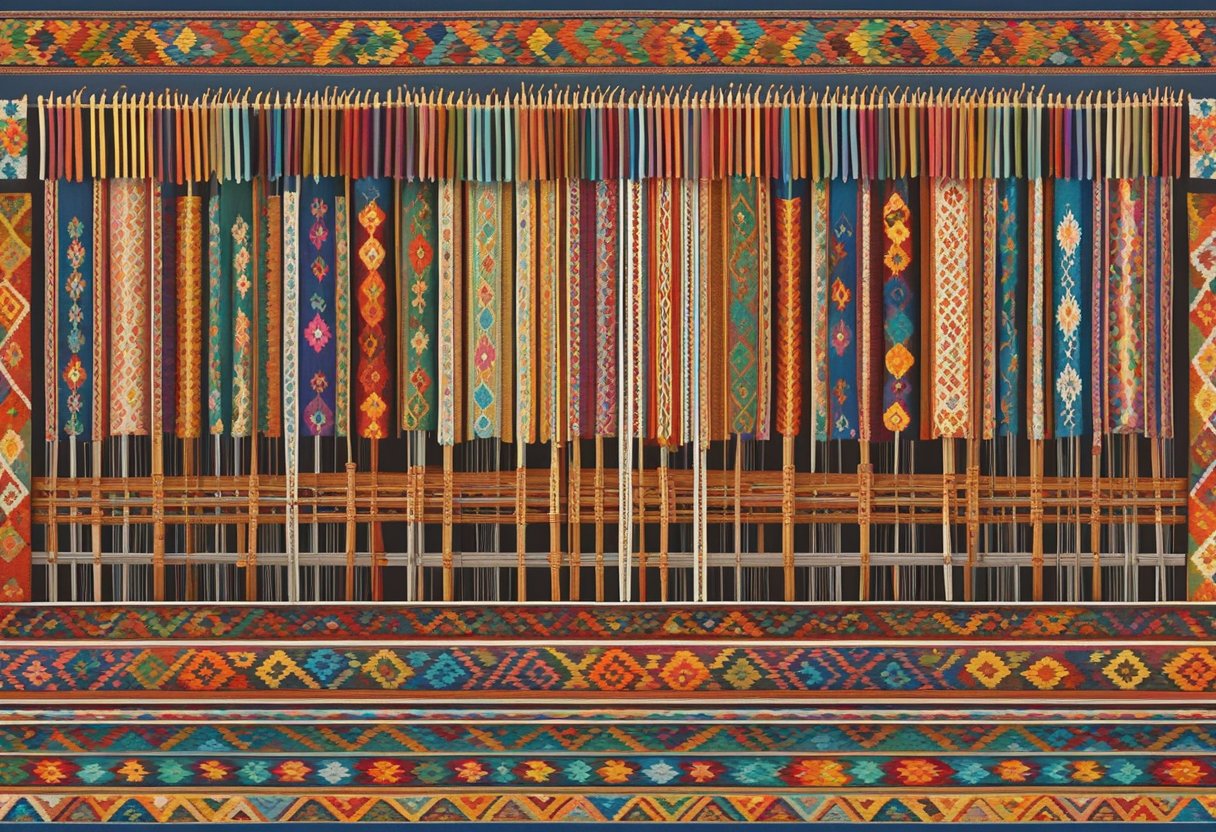What is Chiprovtsi Kilim? Discover the Rich History and Craftsmanship

Chiprovtsi kilims are handmade flatwoven rugs originating from the town of Chiprovtsi in Bulgaria, dating back to the 17th century. These unique carpets are known for their two identical sides, achieved through a special weaving technique that avoids any knots. Each kilim showcases vivid, long-lasting natural dyes and intricate patterns that reflect Bulgarian heritage and craftsmanship.
Women in almost every household in Chiprovtsi use vertical handlooms to create these carpets, making them an integral part of the town's cultural fabric. The process involves interlacing the weft yarn into the warp and using a small beater to tighten the weave, resulting in durable and aesthetically pleasing designs. The double-sided nature of Chiprovtsi kilims makes them versatile for use as both floor coverings and decorative tapestries.
Interest in Chiprovtsi kilims extends beyond their functional use, capturing the attention of collectors and enthusiasts worldwide. Their detailed patterns and vibrant colors are not just beautiful but also tell stories of Bulgarian tradition and artistry. Kilims from this region, along with those from neighboring areas, contribute significantly to the local and regional heritage of carpet weaving.
Origins and History
The Chiprovtsi kilim is a significant cultural artifact with deep roots in Bulgarian arts and crafts, dating back several centuries. Its history involves intricate weaving techniques and influences from different periods of Bulgarian history.
17th Century Beginnings
The town of Chiprovtsi in Bulgaria is where the production of Chiprovtsi kilims began in the 17th century. These kilims are known for their handmade, flatwoven design, created with meticulous care and craftsmanship. Originally, the weavers used geometric patterns and bright colors, which were symbolic in nature. In this period, the kilims were not just decorative but functional as well. They were used in homes for warmth and as part of dowries, signifying wealth and social status. These kilims have two identical sides, a unique feature that highlights the quality of the craftsmanship.
Bulgarian National Revival
During the Bulgarian National Revival in the 18th and 19th centuries, the Chiprovtsi kilim saw a resurgence. This period was marked by a renewed interest in Bulgarian cultural identity and heritage. The designs of the kilims evolved to incorporate more complex patterns and a greater variety of colors.
Artisans began to experiment with floral and more intricate geometric designs. The kilims produced during this time were often seen as symbols of national pride and identity. The techniques used remained traditional, passed down through generations with strict adherence to the quality and style that made Chiprovtsi kilims famous.
Ottoman Rule and Influence
The Ottoman Empire ruled over Bulgaria for several centuries, and this period had a significant impact on the production of Chiprovtsi kilims. The Ottoman influence introduced new motifs and weaving techniques to the local artisans. The incorporation of these elements resulted in a fusion of Bulgarian and Ottoman styles.
Despite the foreign influence, the Chiprovtsi kilim maintained its distinct identity. Weavers continued to produce these rugs in the traditional manner, ensuring that the essence of Bulgarian craftsmanship was preserved. The kilims from this period are often distinguished by their intricate designs and the blend of cultural elements, making them highly valued by collectors. In conclusion, the origins and history of the Chiprovtsi kilim reflect the rich and diverse cultural landscape of Bulgaria, shaped by centuries of tradition, revival, and external influences.
Cultural Significance

Chiprovtsi kilims hold an important place in Bulgarian culture. They are part of the town's identity and symbolize centuries-old traditions.
Intangible Cultural Heritage
Chiprovtsi kilims are recognized by UNESCO as an Intangible Cultural Heritage. This designation highlights the importance of preserving these traditional crafts. The kilims are woven using vertical handlooms in almost every household in Chiprovtsi. This practice has been maintained since the 17th century and is considered vital for the community's cultural expression. In 2014, this weaving tradition was officially listed on UNESCO’s Representative List of the Intangible Cultural Heritage of Humanity. This recognition underscores the artistry and cultural heritage embedded in each kilim.
Symbolism in Patterns
The patterns in Chiprovtsi kilims carry deep symbolic meanings. Common patterns include geometric shapes and intricate designs. Each motif can represent various themes such as strength, protection, and fertility. For example, the "ram's horn" symbolizes power and masculinity. Another common motif is the "eye," which is believed to protect against evil. These symbolic designs are integral to the cultural resonance of the kilims, turning each piece into more than just a rug but a narrative woven into fabric.
Chiprovtsi Uprising and Kilims
The Chiprovtsi Uprising of 1688 is another significant aspect related to these kilims. During this revolt against the Ottoman Empire, many residents fled or were killed, but the tradition of kilim weaving endured. Even in times of upheaval, the art of kilim-making persisted as a form of cultural resilience. Today, the kilims serve as a reminder of the town's rich history and its people's enduring spirit. The carpets are not merely decorative items, but cultural artifacts that capture the town's historical struggles and triumphs.
Design and Patterns

Chiprovtsi kilims are well-known for their intricate designs and vibrant colours, which often include symbolic motifs and regional variations. These elements play a critical role in the overall aesthetics and cultural significance of the rugs.
Ornamental Motifs
The designs on Chiprovtsi kilims often feature motifs such as stars, ram's horns, and geometric patterns. These motifs carry deep cultural meanings. For instance, the star symbol is believed to bring good luck and protection. Additionally, the motifs are woven into the fabric using a combination of warp and weft threads. This results in a flatwoven texture unique to these kilims. The motifs are meticulously crafted, showcasing the skill and artistry of the weavers.
Colour Symbolism
The colours used in Chiprovtsi kilims are not only aesthetically pleasing but also steeped in symbolism. Red is a dominant colour and represents vitality and life. Other common colours include blue, symbolizing purity, and green, which stands for fertility. Natural dyes are used to achieve the vibrant hues. These dyes often come from plants, roots, and other natural sources. The colours are carefully chosen to convey specific messages and emotions. Each kilim thus tells its own story through its colours and motifs.
Regional Variations
While all Chiprovtsi kilims share common themes, there are regional differences in design and technique. These variations reflect the diverse cultural influences in Western Bulgaria where they are made. Some kilims may feature more elaborate patterns, while others stick to simpler, traditional designs. The choice of colours and motifs can also vary, influenced by local traditions and available materials. As a result, each Chiprovtsi kilim is unique, bearing the hallmarks of its specific region while contributing to the rich tapestry of Bulgarian heritage and craftsmanship.
Weaving Techniques

Chiprovtsi kilims are renowned for their intricate designs and skilled craftsmanship. The weaving of these unique rugs involves several key techniques, each contributing to the rug’s durability and aesthetic.
Vertical Loom Weaving
Chiprovtsi kilims are traditionally woven on vertical looms. This type of loom allows weavers to manage larger pieces effectively. The vertical orientation lets artisans work on sections incrementally, giving them control over details. Vertical looms also support the tension needed for tight, even weaving. The weaver sits or stands in front of the loom, passing the wool weft through the warp threads. A firm beater is used to compress the weft into place, ensuring a secure and even texture across the rug.
Warp and Weft Integration
The structure of a kilim relies heavily on the interaction between warp and weft threads. Warp threads are the vertical elements, typically made of strong cotton or wool. These threads provide the foundational grid. Weft threads, on the other hand, are woven horizontally through the warp, creating the fabric of the rug. For Chiprovtsi kilims, different colored weft threads are carefully interlaced to form geometric patterns. This technique creates a reversible rug, with no discernible front or back. The process also leaves small slits or gaps at color changes, which are characteristic of kilim rugs.
Finishing Touches
After the main body of the kilim is woven, the edges and ends are secured to prevent fraying. Weavers may use various knotting methods to secure the warp threads at the ends. These knots add to the durability and longevity of the rug. Trimming and other aesthetic touches are carried out to finalize the design. Often, weavers add fringe or braid the ends for decorative purposes. The edges are sometimes reinforced with extra stitching to maintain the rug’s shape over time. By focusing on these techniques, Chiprovtsi kilim weavers produce durable, beautiful rugs that reflect a rich cultural heritage.
Materials and Production

Chiprovtsi kilims are known for their vibrant colors and durable wool materials. The techniques used in their creation and the natural dyes employed make these rugs unique and valuable.
Wool Production
Wool is the primary material used in Chiprovtsi kilims. The wool is sourced locally and is valued for its durability and softness. Sheep in the region are raised specifically for their high-quality wool. The wool is sheared, cleaned, and then spun into yarn. The yarn is then prepared for weaving. This traditional process ensures the fiber retains its natural oils, giving the kilims a longer lifespan and a rich texture. The craftsmanship in wool preparation greatly influences the final product's appearance and feel.
Natural vs. Chemical Dyes
Dyes used in Chiprovtsi kilims come from both natural and chemical sources.
- Natural dyes are derived from plants, insects, and minerals native to Bulgaria. Examples include madder root for red and walnut husks for brown. Natural dyes are prized for their deep, rich colors that age gracefully over time.
- Chemical dyes offer a broader range of vibrant colors and are easier to use. However, they may not have the same longevity and environmental benefits. Each dyeing method affects the final hues and durability of the kilim.
The choice between natural and chemical dyes depends on the weaver’s preference and the desired outcome. This balance between traditional techniques and modern materials is what makes Chiprovtsi kilims distinctive in the world of hand-woven carpets.
The Chiprovtsi Kilim Today
The Chiprovtsi Kilim continues to thrive through the efforts of modern weavers and enjoys significant global recognition. The tradition is passed down through generations, ensuring it remains a vital part of Chiprovtsi’s cultural heritage.
Modern Day Weavers
In Chiprovtsi, kilim weaving is still primarily a women’s craft. Mothers, grandmothers, and daughters work together on vertical handlooms, continuing techniques unchanged since the 17th century. These weavers create intricate, two-sided carpets that reflect the rich heritage of the region. Despite the modern pressures, the community remains dedicated to preserving the skill and artistry involved in making these handwoven masterpieces.
Global Recognition and Market
The Chiprovtsi Kilim has achieved worldwide recognition, particularly after being listed as an Intangible Cultural Heritage by UNESCO in 2014. This status has helped attract attention from connoisseurs and collectors in cities like London and Paris. Efforts like Jakob van Beilen’s initiative to return historical Chiprovtsi kilims to Bulgaria have further raised the profile of these unique carpets. Today, kilims from Chiprovtsi are seen as valuable handicrafts sought after by collectors globally.
Transmission of Kilim Weaving
Transmission of this cultural heritage is crucial. Skills are passed down from grandmothers to daughters, ensuring the continuation of tradition. In recent years, workshops and educational projects have been established to teach younger generations and maintain the craft's integrity. These efforts ensure that the artistry and techniques do not fade away, preserving a centuries-old legacy for future weavers.
Influence and Relations
Chiprovtsi kilims have a rich history characterized by their unique weaving techniques and cultural connections. This section explores their interactions with the Pirot kilim tradition and Bosnian kilim culture.
Pirot Kilim Connections
The Chiprovtsi kilim shares several similarities with the Pirot carpet, produced in the town of Pirot in Serbia. Both feature intricate geometric patterns and vibrant colors. The Pirot carpet is known for its high quality and has been produced since the 18th century. Like the Chiprovtsi kilim, Pirot carpets are traditionally woven on vertical looms. They also share design elements such as repeating motifs, which are often symbolic. For example, both kilim styles use animal and plant motifs to convey cultural meanings. Trade routes between Bulgaria and Serbia facilitated cultural exchange, influencing both kilim traditions. The exchange of techniques and designs helped in the evolution of unique yet interconnected weaving styles.
Bosnian Kilim Links
Bosnian kilims also have historical ties to the Chiprovtsi kilim tradition. This connection is evident in similar weaving techniques and shared uses of motifs. Bosnian kilims are known for their vibrant patterns and use of natural dyes, much like the Chiprovtsi kilims. Both traditions often utilize geometric shapes and symmetrical designs, which are woven by hand on vertical looms. Bosnia has a rich textile tradition, and the cross-pollination with Bulgarian techniques is evident. Weavers from both regions have historically exchanged knowledge, resulting in common threads in their weaving methods. This exchange has helped preserve and enrich the textile heritage of the Balkans.
Chiprovtsi Kilim in Arts and Media
Chiprovtsi kilims, known for their vibrant designs and historical significance, often feature in documentaries and fine art. Their cultural impact is reflected in these media, highlighting their importance to Bulgarian heritage.
Kilim in Documentary Films
Documentary films provide a detailed look at the history and craftsmanship of Chiprovtsi kilims. Directors often focus on the traditional weaving methods used by artisans in the town of Chiprovtsi. These films capture the intricate process of creating the kilims, from selecting the yarn to the final weaving.
A notable documentary is "The Weavers of Chiprovtsi," directed by Svetlana Ivanova. This film explores the lives of the local women who have kept the tradition alive for centuries. The documentary also features interviews with historians and weavers, offering a comprehensive view of the kilim's cultural significance. By documenting these practices, filmmakers help preserve the art and bring it to a global audience, ensuring that the traditions of Chiprovtsi are not forgotten.
Representation in Tapestries and Fine Art
Chiprovtsi kilims also appear in various forms of fine art and tapestries. Artists often incorporate the bold geometric patterns and vibrant colors of these kilims into their work. This not only showcases the artistic value of the kilims but also highlights their historical and cultural importance. In galleries and museums, Chiprovtsi kilims are displayed alongside other significant textiles. Tapestry exhibitions frequently feature these intricate works, emphasizing their artistic and cultural value. Artists like Nikolay Petrov have created modern interpretations of Chiprovtsi designs, blending traditional techniques with contemporary styles. This fusion of old and new keeps the kilim relevant in today's art scene. Through these representations, the beauty and craftsmanship of Chiprovtsi kilims continue to inspire and captivate audiences around the world.




